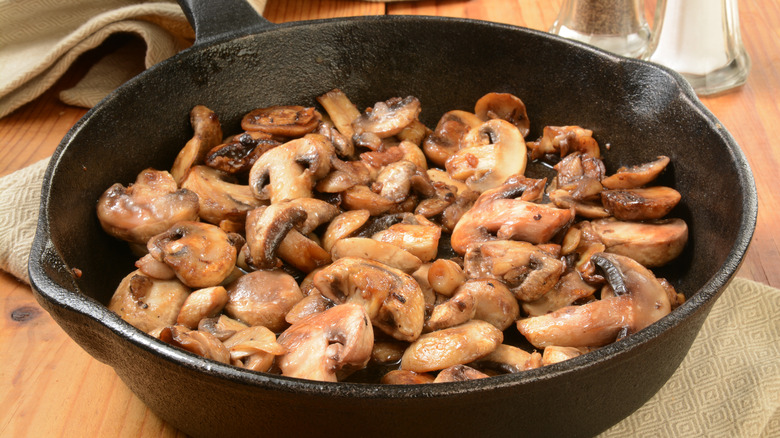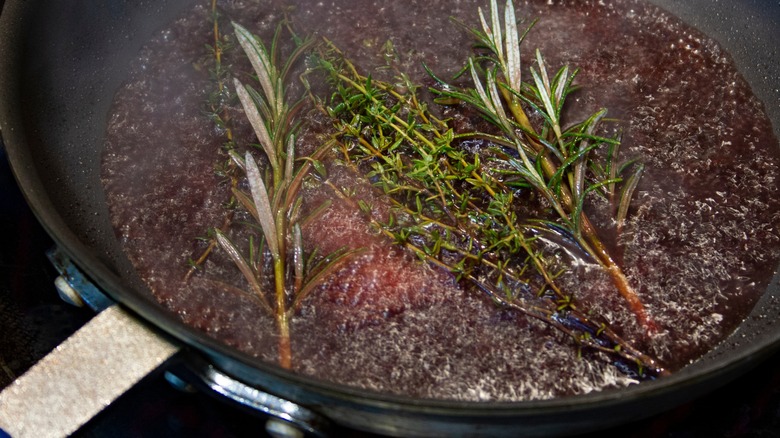For Better Browned Mushrooms, Hold The Fat Until The End
When it comes to browning mushrooms, the stovetop methodology falls between two opposing camps: Dry saute and wet saute. Dry sauteing places sliced mushrooms in a skillet without adding fat, while wet sauteing primes the saute pan with butter or oil before adding the mushrooms. Both methods have their merits and offer unique flavors and textures. However, you can have the best of both worlds by employing the two methods consecutively.
Dry sauteing concentrates mushrooms' rich umami flavors by letting their water content cook them as it evaporates. This method also creates the browned, slightly crisp edges and a meatier chew. Fat adds earthy, savory richness but runs the risk of sabotaging the release of water which results in slimy or mushy mushrooms. To achieve perfect browning and the flavorful enhancement fat brings to a saute, start with a dry saute, and use the same pan to create a mushroom-fused glaze.
Once you've removed the mushrooms from the saute pan, you deglaze the pan with a bit of wine or stock, then add butter or oil, or a mixture of both, into the pan while it's still hot. The fat will blend with and thicken the deglazing liquid into a mushroom-infused reduction. A drizzle of this glaze will enhance the mushrooms' natural flavors while adding a savory depth of its own. Furthermore, finishing with a drizzle of fat will oil the mushrooms while allowing them to maintain delectable crisped brown edges from the dry saute.
More browning tips
Both dry sauteing mushrooms and deglazing the pan entail various important techniques and tips for successful execution. Even before adding mushrooms to the pan, their preparation will aid in browning. Washing the grit and dirt from mushrooms is an important step that many skip because they think water will saturate mushrooms and cause a slimy consistency. However, this is a myth; running mushrooms under water adds minimal moisture as long as you cook them within a few minutes of washing them.
To reap the textural benefits of browning, slice mushrooms instead of tearing them, so that they have a larger area of flat surface to sear on the hot pan. Thicker slices are optimal for the perfect textural contrast of crispy exteriors and tender, juicy interiors. When you place the mushrooms in the dry saute pan, there should be an even, single layer of mushrooms. Placing two or more layers of mushrooms in the saute pan will hinder the evaporation of water, resulting in soggy mushrooms. Another tip is to resist the urge to stir the mushrooms as they cook. Instead, let them brown undisturbed for a few minutes, stirring them only to flip them over and let the topside brown.
Deglazing the pan provides the opportunity to add herbs and aromatics for even more depth of flavor to your dry sauteed mushrooms. Both the deglazing and the dry saute require medium heat to fully develop the flavors and textures of the mushrooms and aromatics.

